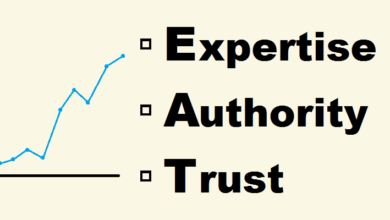A Complete Guide to Understanding SEO Meta Tags

Search engines have changed the way people answer nagging questions in their heads or search for products and services. Google, as a search engine, doesn’t rank websites arbitrarily. Beneath it all is a sophisticated algorithm. For businesses to get the coveted top spot of a keyword ranking, the website should have the various ranking factors that Google uses to determine expertise, authority, and trustworthiness. An Edmonton local SEO agency will tell you that one of these factors is the meta tag.
What are meta tags?
Meta tags are part of the HTML tags that describe your page to the website visitors and search engines. It is not visible when you search using a keyword on Google because it is only readable when you check the page’s source code. Meta tags are key things for search engines when they crawl through the HTML code of a page. These tell web crawlers what your page is about.
Meta tags are invisible but they provide data about the page that search engines need to determine what your content is and if you are going to help the searchers.
Why Meta Tags Matter
Meta tags offer important details about your page or website. For instance, if you offer storage facilities in North York, visitors will encounter it on the search engine results page (SERP). They can be optimized so the most important elements of your content are highlighted thereby increasing your website’s chance to get noticed by the search engine.
Search engines are putting a high premium on good user experience and this includes making sure that the site will answer user queries in the best way possible. Meta tags help in making sure that the information searchers want to know about the site is displayed right away.
There are types of meta tags that relate to the page structure which ensure that the site is easy to navigate, others are for telling search engines which parts of the page are important and which ones can be overlooked.
6 Types of Meta Tags You Need for SEO
There are different types of meta tags that fulfil different roles. Although you may encounter a lot of “metas” not all of these need much effort and attention. Here’s a narrowed-down version of the meta tags that you need for search optimization:
-
Title Tag
The title tag is the first HTML element of the web page. It specifies what that page is about. Title tags are important for SEO and website visitors because these are what appears in the SERPs and in browser tabs.
For the title tag to be effective and to show up in search results, you need to pull it out and show it as an anchor text and title in social shares. For that to happen, you need a title tag that is clear and descriptive. For example, if you offer an online security course in Toronto, your title tag should be, “online security guard courses available in Toronto.”
It should ideally be not any more than 55 characters. If you can pepper these with keywords, the better.
-
Meta Description
The meta description bears the same weight as the title tag. If the title tag is the first thing that appears at the top of the search result, the meta description is this snippet underneath.
This crucial information is an accurate description of the content of that page. Users often use this as a gauge whether to open the page or not. Spending time optimizing the meta description is important because it determines the click your page will get.
Meta descriptions were previously pegged at 150-165 characters to be effective but recent Google updates preferred that they be longer because on some occasions the search engine shows a longer snippet of the content.
The key to making the most out of your meta descriptions? Make sure that your page description is intriguing and to the point.
-
Robot Meta Tag
The robot meta tag informs the search engine of what pages on the site should be indexed. The meta tag also serves a similar purpose to robots.txt. It prevents the search engine from indexing a whole section of a site.
Robots meta tag instructs the search engine crawler not to index a page or follow links. Without a robot meta tag, the crawlers will index and follow your page by default.
So why is it necessary to optimize this for SEO? It is likely that you have some pages on your site which are necessary but not valuable content-wise. You don’t necessarily want them to be indexed in search but they are still important to the site. Using the noindex tag prevents them from appearing in the SERP.
-
Alt Text
Images also have to be optimized for SEO. in fact, images are an important element for a site to rank because it provides an additional opportunity to rank in search results.
Search engines and users can have access to the images you use on your site. Using alt text ensures that you provide a text alternative to images on display should these not load properly, or have it read out by a screenreader. Search engines also find it easier to understand what the image is meant to represent.
In writing your alt text, make sure to include keywords. However, be mindful not to stuff the tag since it will only end up harming your visitor’s experience with accessibility.
-
Canonical Tag
If there are almost identical pages on your site, make sure to inform the search engine about it. It is also likely for the site to have syndicated content that has been republished elsewhere. Search engines do not like duplicate content and penalize hard on erring sites. Avoid this problem by using canonical tags.
This tag is helpful for guiding crawlers to the URL that you want to be indexed first. Plage the emphasis on the right URL so that it will not affect your ranking.
-
Header Tag (h1, h2, h3, etc)
Header tags are a part of your content structure. It improves user experience and eases reading. Header tags help search engines in understanding what the content is about.
Ordering header tags highlight the importance of each section. The most important part – usually the title of the page or article headline – is the h1. H2 is reserved for the subheadings that break the content, and so on.
Just an important note – never overuse the header tags. As much as your readers like their contents broken into sections for easier digestion, you don’t want your content to break up and lose meaning.
SEO is composed of several elements and some of these are not seen by the readers. Your HTML tags are among these important invisible elements that need to be optimized because they play a crucial role in ranking your site.





